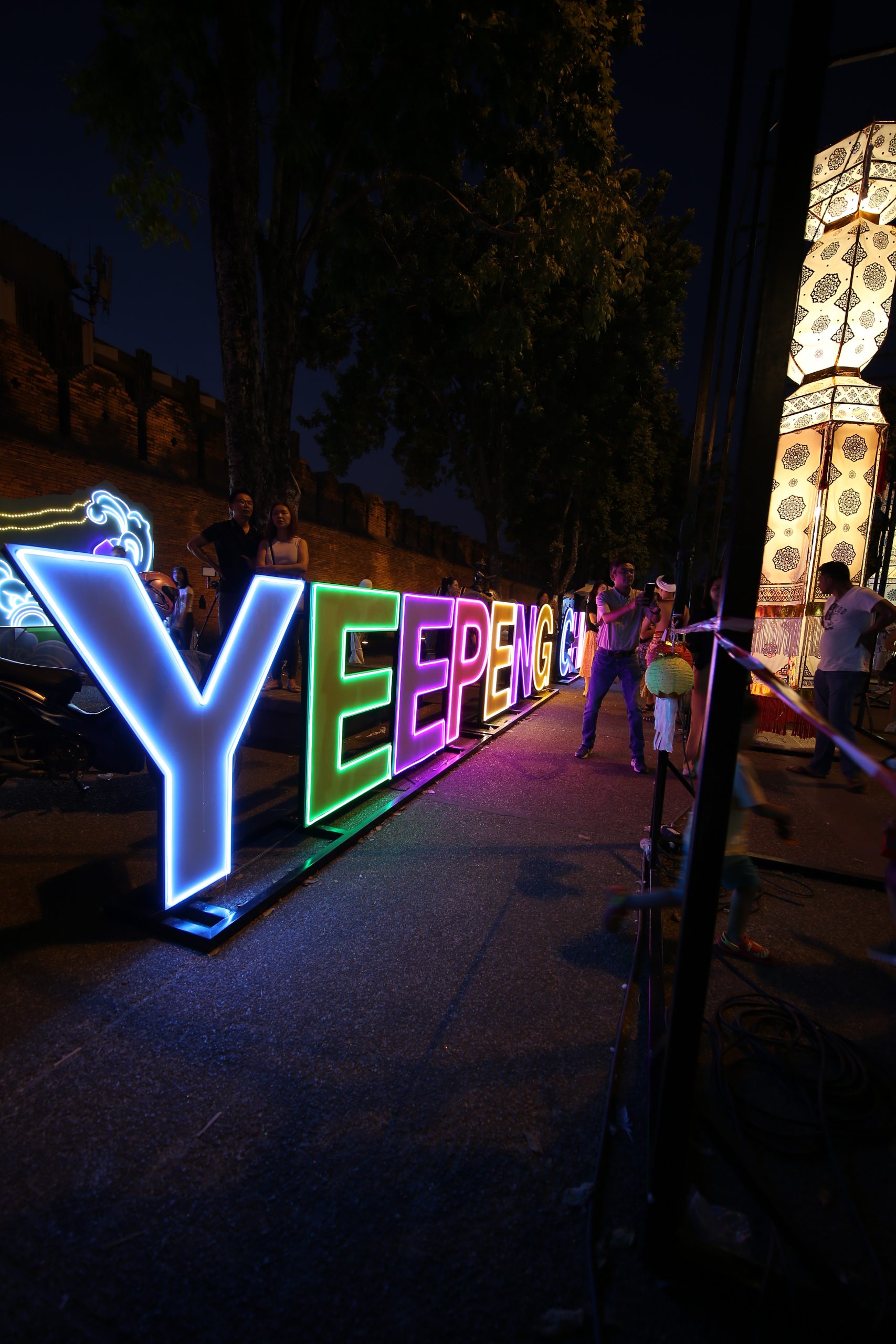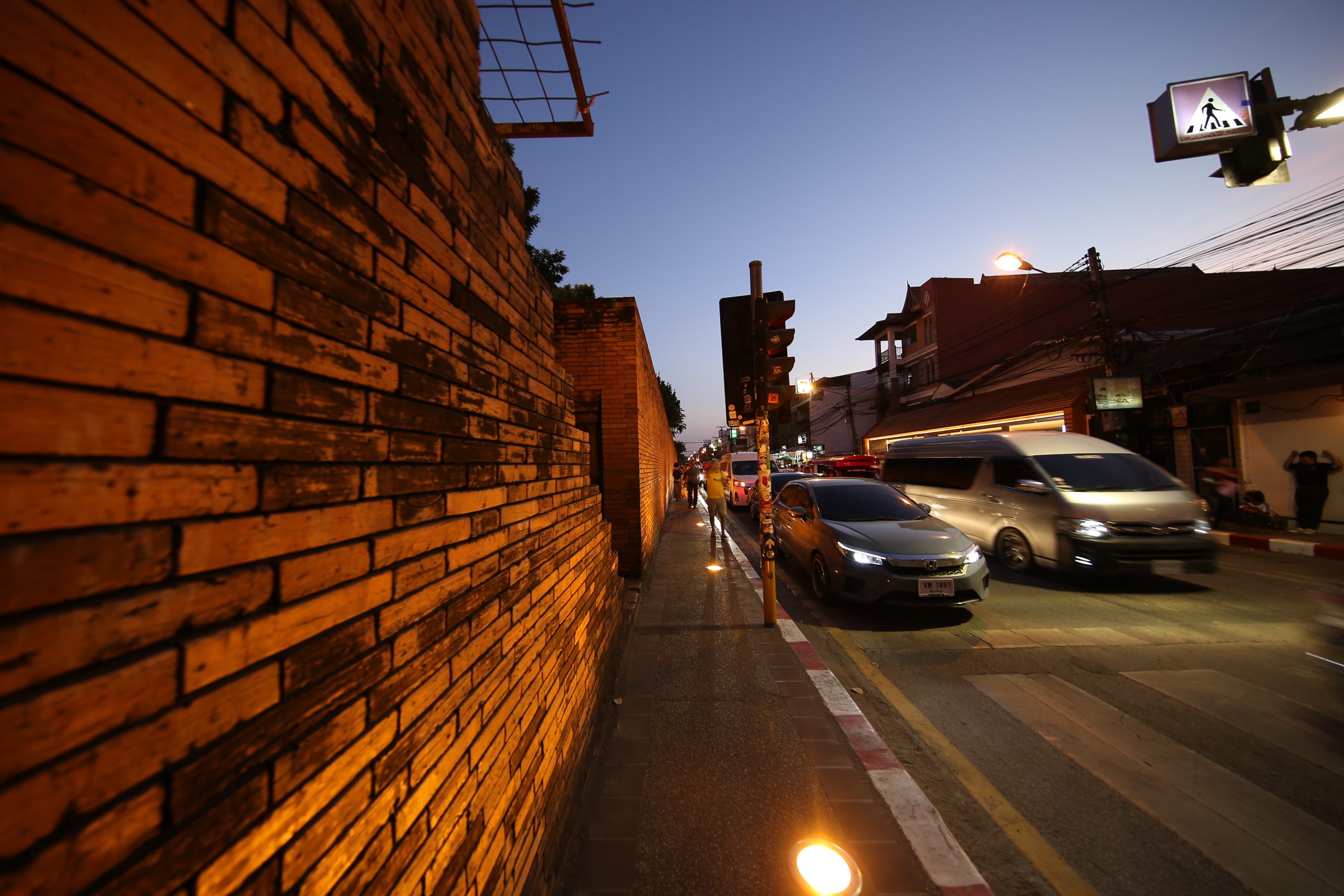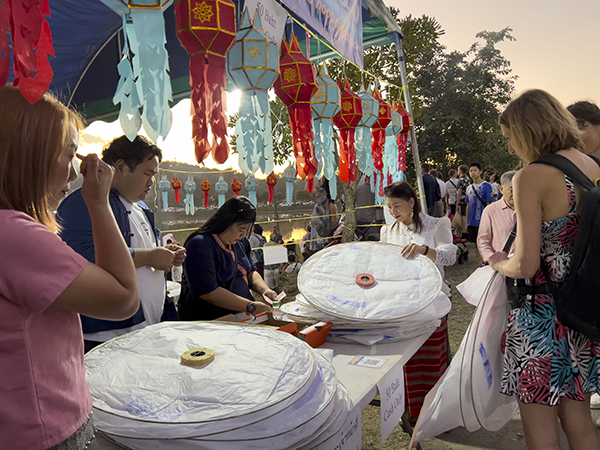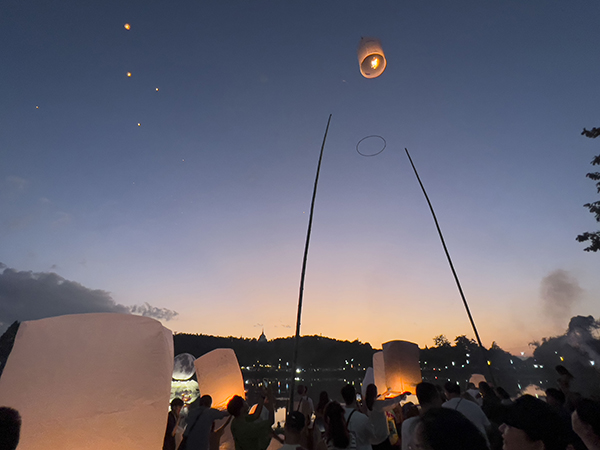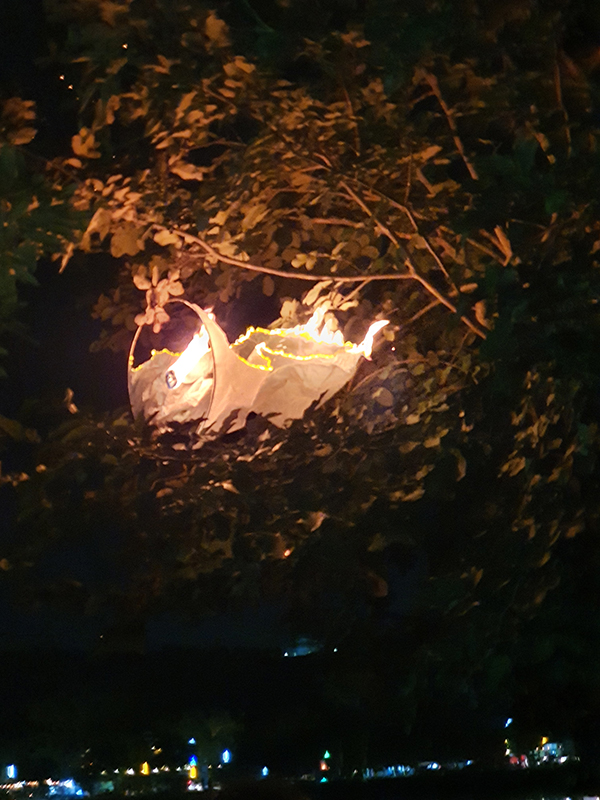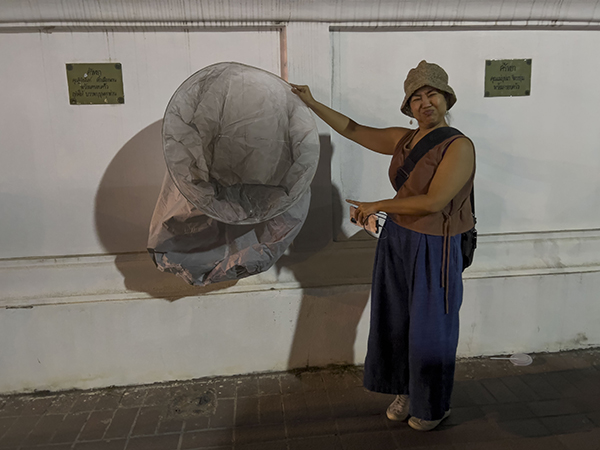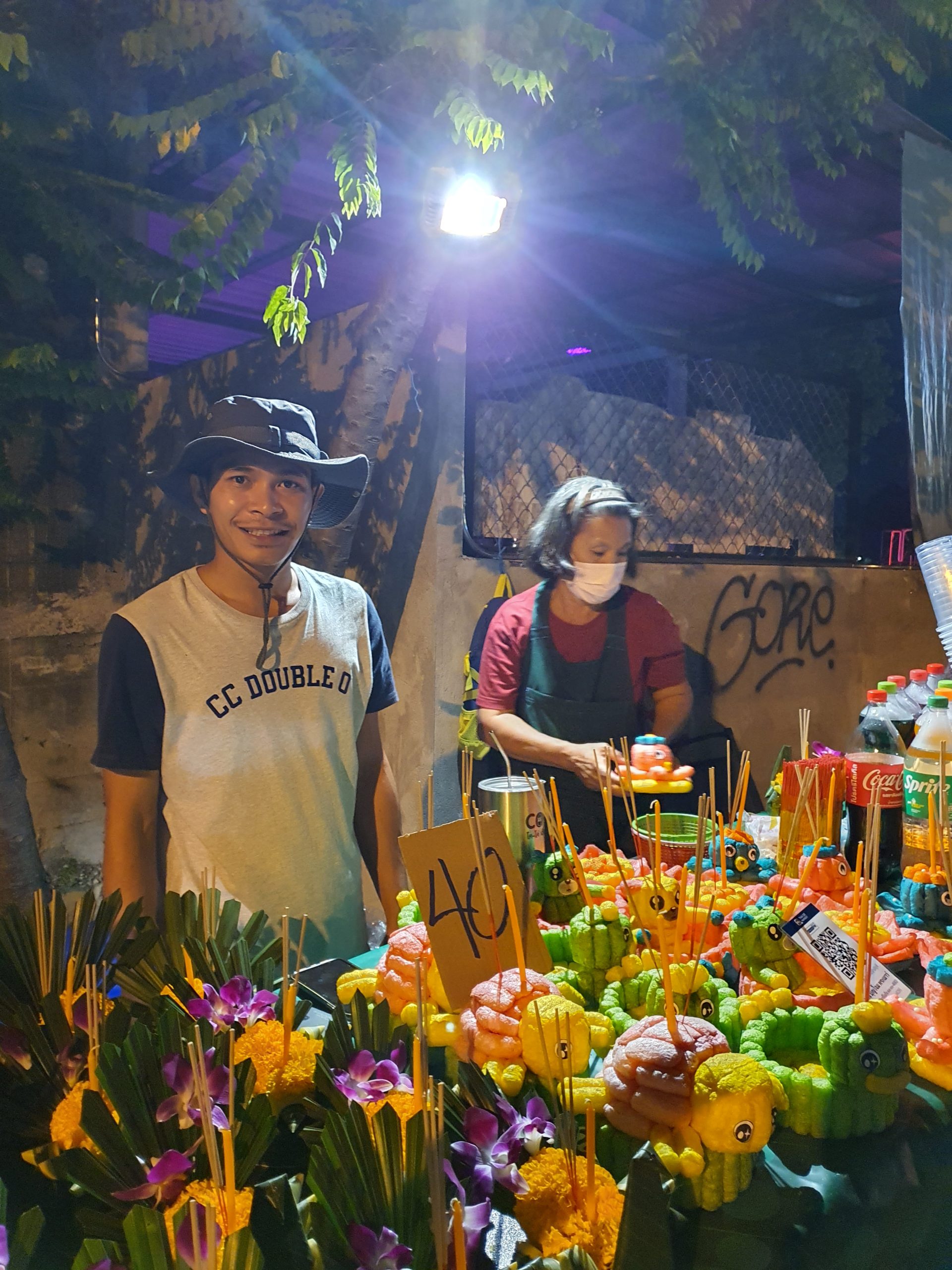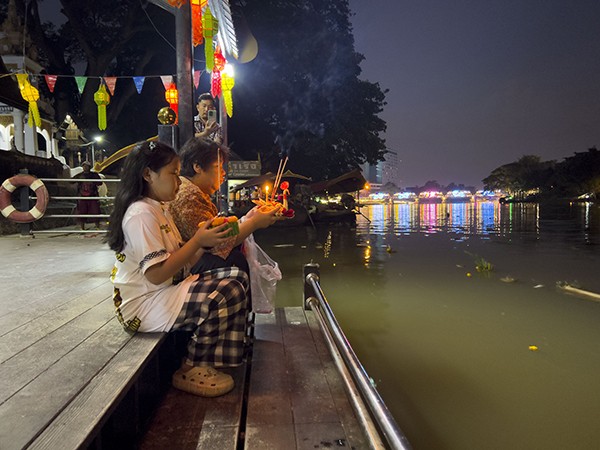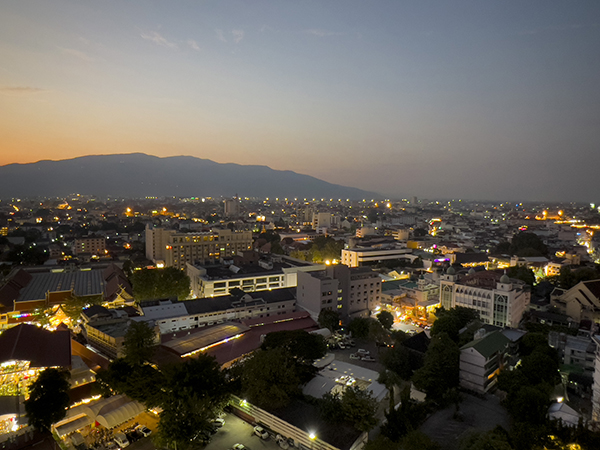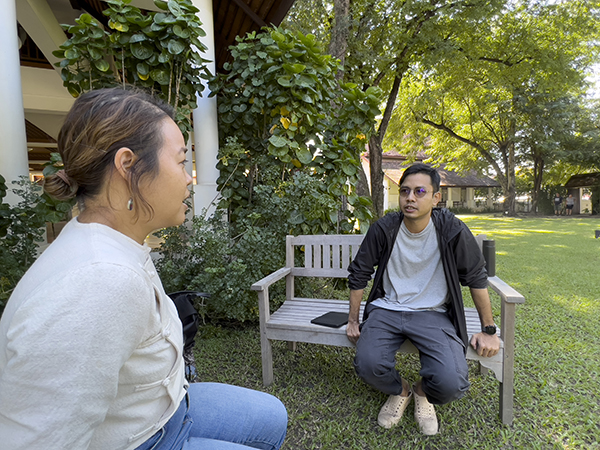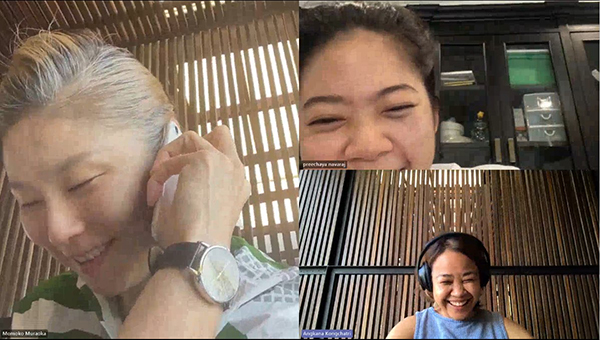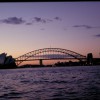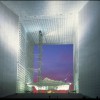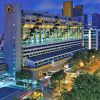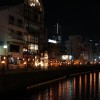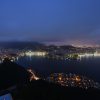City Night Survey- Chiang Mai Lantern Festival 2023.11.25 – 11.29 Angkana Kongchatri (Tan)+Momoko Muraoka
Chiang Mai is the second largest city in Thailand which has special atmosphere tracing from Lannar kingdom period. Tan from Bangkok and Momoko from Tokyo traveled to the city for a survey.
■Back ground of the survey
The lantern festival in Chiang Mai has been getting very high attention from international tourists since a couple of decades ago. Due to its visual appeal, the festival has become an explosively hot tourist spot and activity. As number of tourists raise up, the negative side of the festival also becoming a serious issue, such as the risks of fire and abandoned trashes which cause suffering to local people. In this SNS era, the speed and frequency of exchanging information has become extremely heavy than ever. When very local culture gets intensive attention from unidentified crowds, then the one to retain the culture need to face and respond the troubles to come with the anonymous attention which is also happening on the lantern festival in Chiang Mai. Festivals with lights are attractive. However, overlooking the wastes happening materially and culturally cannot be accepted anymore. Through this survey, we aim to observe not only the bright side but also the problems and struggles behind which could relate with many other traditional lighting festivals. We believe that the approach could bring another layer of depth for the lighting detective activity with responsible attitude. (Momoko Muraoka)
■ Festival History & Background
Loy Kom Yi-Peng Yi Peng is an old tradition of Lanna (Lanna Kingdom) that has been practiced since the 14th century. The main activities that we can relate to are –
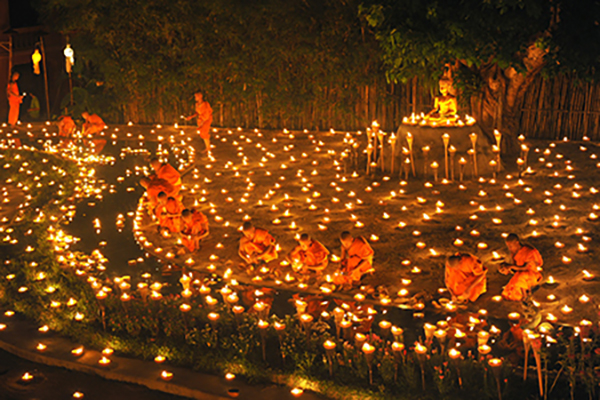
- Phang Pratheep = Light up Candles Phang Prathee or Phang Prathip is an object of worship in Buddhism. The word “Phang” is a pottery container that looks like a small cup for holding wax or oil and cotton threads for lighting fires, while “pratīs” are light. And it is believed that it is a point of worship to return the favor to the benefactor. It is an act of paying homage to all the things that we have made use of, such as house doors, walls, windows, and stairs. It is also believed that the light of the lamp will help one gain wisdom. There’s only intelligence. There is light to guide your life so that there is only progress.
- Light the fireworks When it comes to the Yi Peng tradition in various temples, people prepare to make fireworks or fire signs to use as a Buddhist worship spot for children to play and have fun which fireworks are popularly played during the full moon night of the twelfth lunar month. Some people believe that it will be during Yi Peng, help your life shine brightly like the sparks of fireworks. //// we found this activity creates lots of pollution and disturbance/////
3. Releasing Kites (floating “Kom”/ Lantern) There are 4 types of “Kom” (lantern), in thisreport will only focus on “Kom Loy”, a floating lantern. “Kite” in Lanna means a type of plaything made of paper for letting it float away with the wind similar to a balloon nowadays. It is popularly called in the central dialect “Kom Loy”. According to Lanna culture during Yi Peng, fire kites or floating lanterns are released in the belief that it is to pay homage to Phra That Ket Kaew Chulamanee enshrined in heaven Later. It was also believed that releasing sky lanterns was like letting go of bad luck and sorrow, letting go of bad things from your life. ***During Yi Peng, there are 2 types of kites (Koms) being released: -Hom kites (wind kites) or smoke lanterns are lanterns made from multi-colored paper to absorb heat from the smoke, using hot smoke compressed into the body of the kite, called “hom smoke”, to help it float up into the air. It can be made in many forms, the popular ones are square and round shape. Popularly released during the daytime. -Fire kites or lanterns (Kom Loy) are commonly lit at night. The same principle applies to makinghome kite but it uses less paper and relies on heat from the fireball tied to the core to make the kite rise into the air, the fireball is tied to the core. Nowadays, it is popular to use toil et paper soaked i n candl e wax. (Angkana Kongchatri)
■City Characteristics
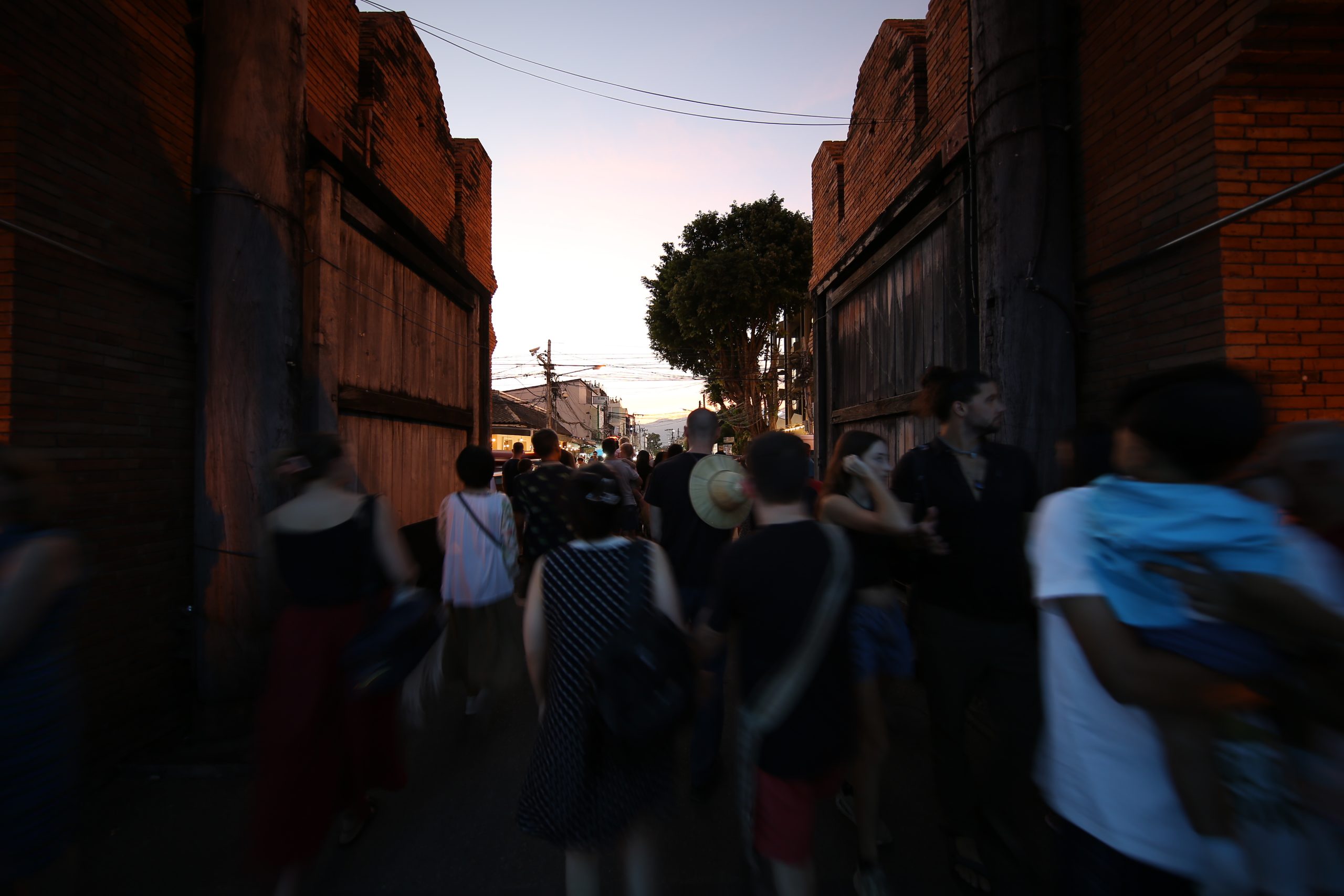
Chiang Mai province is the second largest city in northern Thailand and has a population of 1.8 million people, as of 2022. In general, we can feel that the city is moving much slower than other big cities or capitals like Bangkok. People are very friendly, calm, generous. Agriculture is still a significant sector in the Chiang Mai and Northern Thai economy. With rapid urbanization, Chiang Mai City has not developed as far as Bangkok or Phuket, with no high-rise buildings. The city is surrounded by mountains and dotted with ancient temples giving it a rare combination of adventure, nature, culture, history, art, craft, food, and modern comforts. The Old City Wall Gates is one of the main highlights.It is within this gate that we are enthralled with the area’s weekend night market, opening at around 5 PM and closing at around 11 PM, known for its very inexpensive but equally delicious foods. Tapae Gate is the eastern portal to Chiang Mai. It was originally built in 1296, what we see recently was reconstrcuted and replicated in the 1980’s as close as the authenticity of the original design taken from old photos and drawings from before its demist in World War II. (Tan)
■ Old city, night market
The wall which borders old city has strong presence with dignity of the history from Lanna kingdom era. Entering the main gate to the old city, Tha Phae Gate, the streets are so vibrant with full of stalls and crowds. Stalls are equipped various type of LED clip lights which correspond with what they sell. The clip lights illuminate at the range from human height to waist upwards with their task light and the situation creats unique lighting sequance in the view. At some streets aside, some people are having foot massage at the relaxing chairs and the area is more dimmed which must be relaxing. Some part of south eastern culture present that public spaces are belong to people which is very nice sence of value. Like the foot massage space at the street, when city has open space to be filled in by ramdom people with mixture of various activity in nice way, that means the city has the energy and tolerance to let people be so which is very nice. (Momoko)
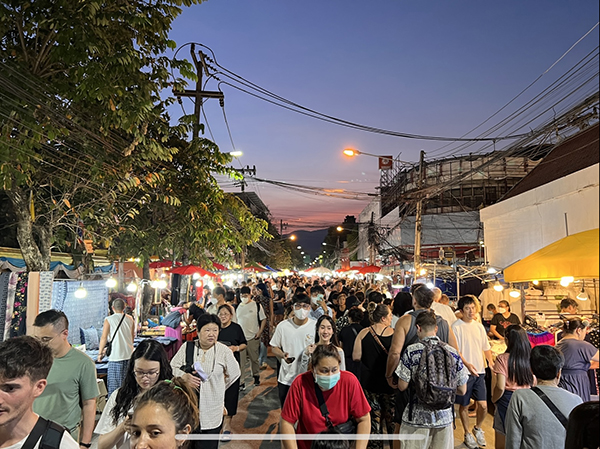
■ Yi peng
Yi Peng is the name for the floating lantern with prayer releasing into sky which is used to has no restriction to do in the city. However, due to the fire incidents and all the garbage left out, now the areas for releasing sky lantern are limited within some authorized areas only which takes 30 min. car ride from the city center. (Although it is prohibited, sky lantern releasing can be seen in the city. There will be fine if you get caught on the action. ) We head to the authorized site with lake for releasing lantern where was expected to have more percentage of attendance from locals. By the time getting close to sunset, people gathered more and more with holding their own lanterns to release. As observed from languages spoken, most of them are from outside of Thailand. As overheard, we expected some peak time such as countdown for lantern launch happens at certain point of the festival schedule, like the mayor arrival or sunset time. However, in thep result, there was no program setting like that, it was full of randomness with loud noise of DJ shouting and fireworks setoff. Sky lantern launching were at lake edge and the site just next to it is a set up of concert stage and food strolls with high lux level and glary condition. It was full of crowds. Sky lanterns which have become larger to be more photogenic, it requires longer time to contain all the hot air to be up in the air, that makes difficult to group of people releasing lantern at the one timing. Then, the waiting moment presents such an unusual view which is naked fire emanate through a big volume illuminating a person holding lantern. And it become the crazy photo shooting moment for individuals. The experience of the view was very bitter for me. Some of the lantern get cause by tree branches in few seconds after released and it turns to just rubbish with large amount. According to the visual impact needs, sky lantern gets bigger with larger fuel for more distance to flow which also glows the scale of negative impact of it. There was fire incident by the sky lantern in this year too. No objection to the attraction of big illuminating floating volume, it is surely beautiful. However, the lantern is already out of context of the original festival background and it is now just a passing leisure with no responsibility. (Momoko)
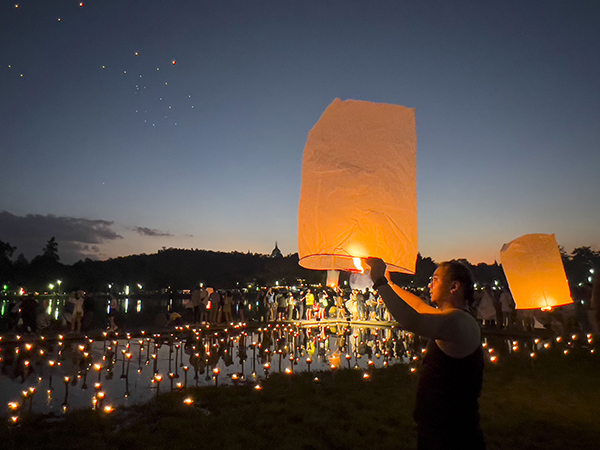
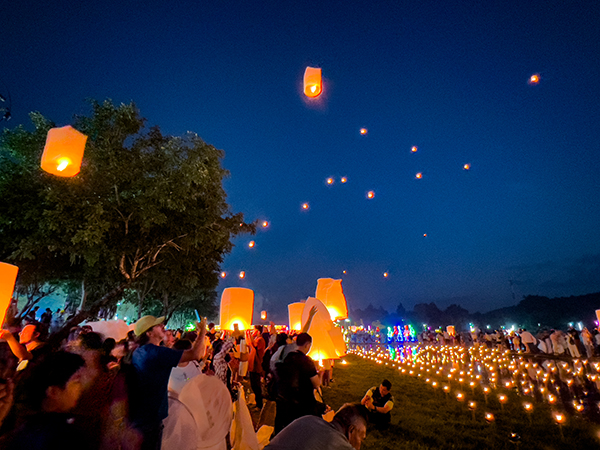
■ Loy Krathong
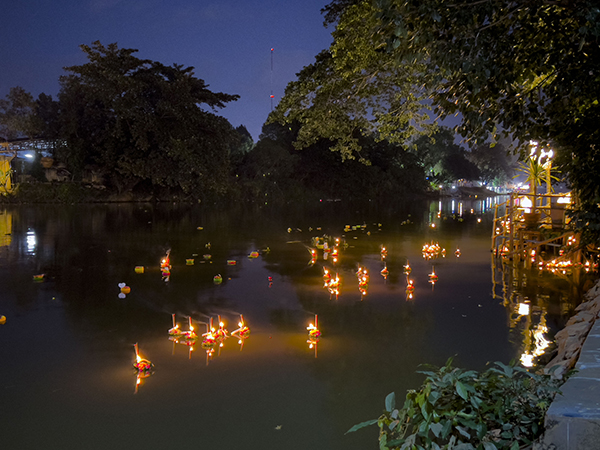
Loy Krathong is a Thai festival celebration throughout Thailand and nearby countries; Laos, Myanmar, Cambodia, etc to thank and forgive the Goddess of Water and River, Goddess Khongkha which is more familiar and relates with the majority in the country compared to Loy Khom Yi Peng. The festival takes place on the evening of the full moon of the 12th month in the traditional lunar calendar and usually falls in November. In Chiang Mai, the festival lasts for three days. When the sun dawns, people start coming out with their “Krathong” to the nearby pier to release Krathong into water or river. Seeing a small Kratong with a lit candle inside slowly floating to the river one after another carries people’s faith and disappearing in the darkness makes a calm and releasing feeling. But when thinking the effect afterwards does not make more positive thinking. Krathong is usually made out of banana stems and leaves but later became replaced with paper, plastic, foam, polystyrene, clip, sharp needles, and fancy materials for decoration. Nowadays, with the encouragement and intention of environmental concerns, people have changed to use natural and sustainable materials for Krathong base such as bread and edible ingredients, coconut shells, leaves, and flowers which believe that fish would eat and be disposed of naturally. But the truth is, there are too many Krathong, and not all fish can eat these ingredients, and not all materials are broken down. Moreover, the increment rate of international tourists also increases the amount of released Krathong causing pollution same as the Floating Lantern to the Sky. This became a huge problem for the authorities to clean up huge amounts of garbage after the festival. (Tan)
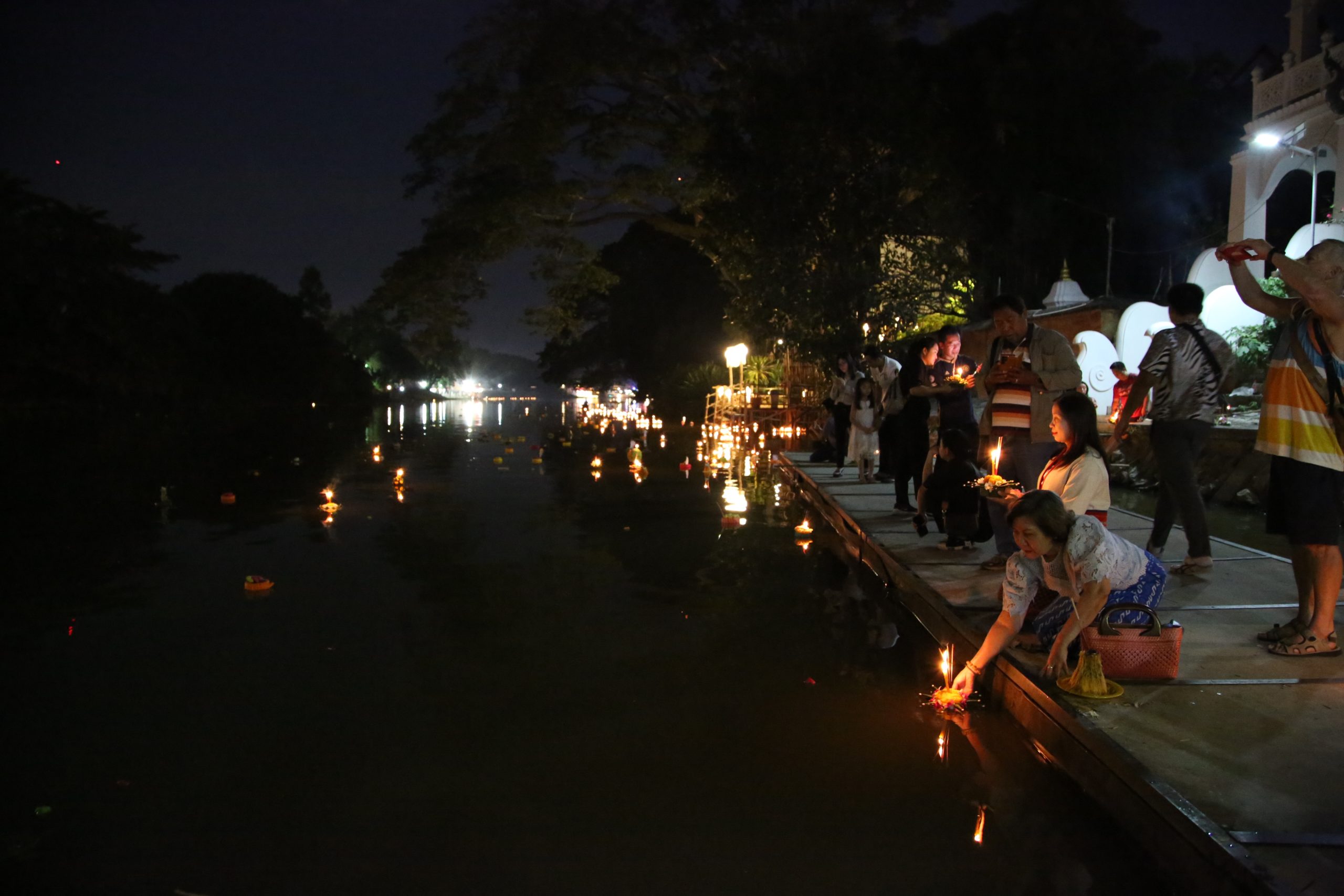
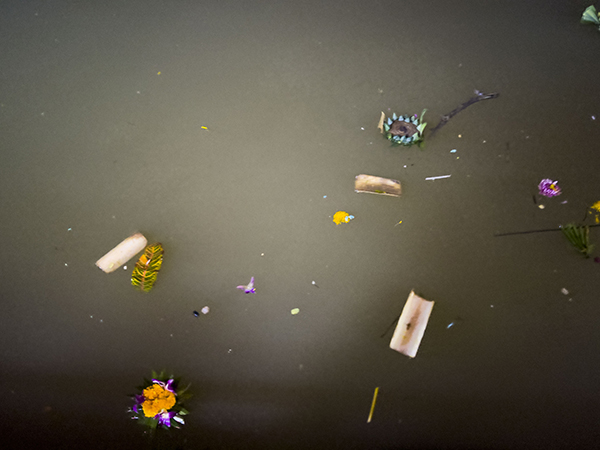
■City general night scape
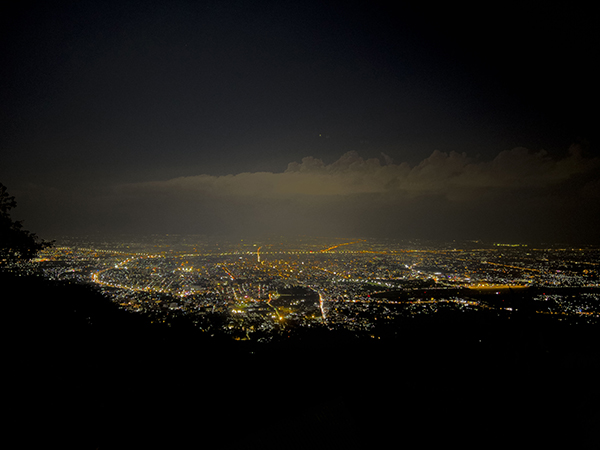
There were 2 spots we tried to capture the city overall night view. First, the famous temple Wat Phra That Doi Suthep at the mountain in the west side of the city. The wall which outline the old city has strong presence in the city though, it was hard to see as the element of nighttime view. The water line and river side is also melt in the dark and could not really see as view. The entire tone is very dimmed, and brighter points are basically car lamps. In the Wat Phra That Doi Suthep precinct inside, high power wide beam flood lights illuminate everywhere pretty evenly that often been seen in other temples. The way of illumination is not aiming for appropriate brightness or good tone of lighting. It is more like stadium lighting. Those temples are special local heritage and have high potential to be nighttime icon, too. The current treatment of their lighting present many side which could explore more. The other view point was open air bar in the city, 16 stories high hotel along river where could observe fort wall, mountains at a side and river at the other side. Chaing Mai has very few high rises, no special icon as nighttime view from above, which makes entire impression of the view very natural and rusticity in good way. At ground level, streets are provided homogeneous lighting with high lux level. The ruins of the fort wall seems not taken as a resource of general nighttime view. However, people put candles on the wall steps at the festival night that makes the ruin special on the day. There is no specific treatment as lighting design for river side or fort wall. However, this is also unique element for the city scape. Therefore, developing lighting master plan for Chiang Mai with keeping the good tone of thep place may have high potential for more attractive nighttime scenery of the city.
■ Market in daytime
Like supermarkets, street market has a strategy on color temperature plotting. But the one on streets has nice and primitive way to present it. For meat sellers, the parasols are red. For fish sellers, the same are blue. The color of parasols work exactly same as what artificial lightings work in supermarkets. Eventually, parasol colors present on what they sell to people in distance. This is an interesting presentation of common knowledge on color rendering. (Momoko)
■ Interview
We interviewed 2 guests, one the local Chiang Mai architect, Mr. Net, and another the Ph.D. student in Urban Masterplanning from Chulalongkorn University, Ms. Poon.
Mr.Net:
Net has shared about the festival that in the past was kept only among locals, with a small number of lanterns not created wasted or pollution issues. But later the festival was spread across and attracted more local and international tourists massively. Moreover, there is an increase in population from outsider migration and about 10 million tourists per year to Chiang Mai city. Chiang Mai City currently does not have any control over excess tourists or advertising to provide correct information and understanding about the festival, and culture. Masterplan is the main factor in controlling by providing a proper infrastructure, rules, or laws but most of the city system or structure as designed by outsiders, not locals who do not have a full understanding of local contexts or cultures. He thinks that the city should scope the area for the lantern floating, and control tourism with a tourist tax for city development and infrastructure.
Ms. Poon:
Chiang Mai City was selected for her Lighting Masterplan subject, after studying and surveyed, she found that the city lacked of connection in cityscape not only in lighting elements but in general providing an Urban Lighting Policy in depth of infrastructure, direction, or way of finding tourists. Other than that safety lighting or city enhancement to the heritage like The Wall to generate city identity was not provided. She has raised the sample of the City of Bath in the United Kingdom is praised as a UNESCO Heritage City. Chiang Mai has a unique city character and is embraced with tons of cultural heritage buildings, elements, and monuments formed since 700 years of the Lana Wisdon era to Siam and Thailand that can be found in the city of the old town or even the outskirts area which can be promoted as another attraction but it was not celebrated nicely. Loy Khom Lantern Festival is another showcase of the unorganized event that causes heavy traffic, wasted rubbish, pollution, etc. This reflects the significant role of the local government in developing and creating the cityscape. Another fact is lighting or nightscape is not the priority. (Tan)
■Summary & Future vision
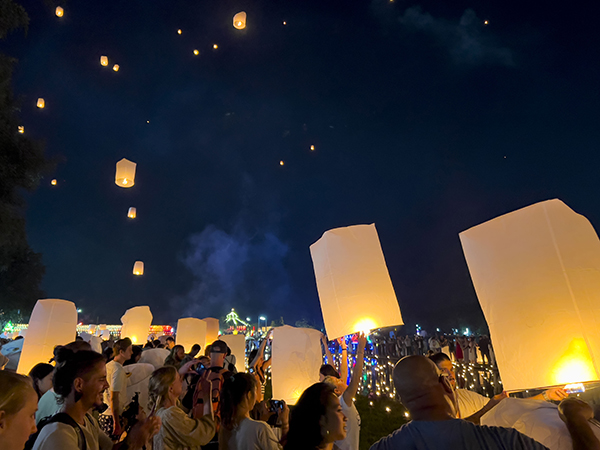
Any festival is originally based on a specific place, history and culture. When the festival becomes a resource of tourism to anonymous crowds, the original meaning has to transform to something different in any way. The situation observed in Chiang Mai this time was actual case example of culture consumption without the original context. Meanwhile, the scenery of making prayer by local people are beautiful and the moment must be precious family memory. Firstly, it is important to commonly share about the cultural background and original meaning of the lantern festival. With the step, it may create a transition point for tourist on how to get in touch with the festival. Secondly, it is important to track the impact on environment in detail. That gives precise provision for better festival arrangement. Moreover, not only festival time but also general city nightscape, Chiang Mai could be a lot more attractive with little tweaks. Chiang Mai is very nice place to stay. It’s safe, comfortable and with many of beautiful historical heritages. I truly hope that the city would take good steps ahead for better situation on city lighting planning on lantern festivals and general nighttime scenery which could extend the charm of the city better. (Momoko)
Only information that I as a Thai local, had before the lighitng survey baout the Yi Peng is only the beautiful images of thousand of lanterns released to the sky posted on internet and social medias that attracted and brought me the intention to visit at once. The informaiton about the Yi Peng culture background is not promoted widely even within the country. After the visit, it changed my perception completely. It was ashemed to see people releasing lantern without understanding of the meaning of worship. We saw a foreigner released about 100 Krathongs to river or a big stack of paper lantern to the sky only the intention of taking the impressive photos. This festival is one of very meaningful and important events for local people to be conserved. To archieve that but also use the Yi Peng festival to boost up torutist for local economy, the local government has to have a good vision, urban planing, city rules, etc. incluiding a nightscape design and promoted and educated tourists both local and internation to provide a clear vison and purpose of this festival then everyone will contribute in a proper manner and prevent all bad impacts to the city, local residences and environment. (Tan)






